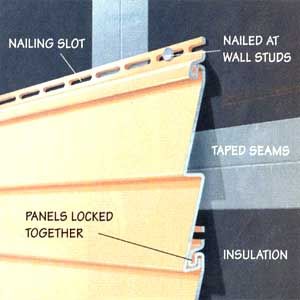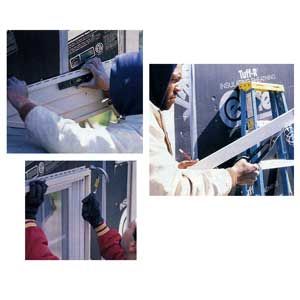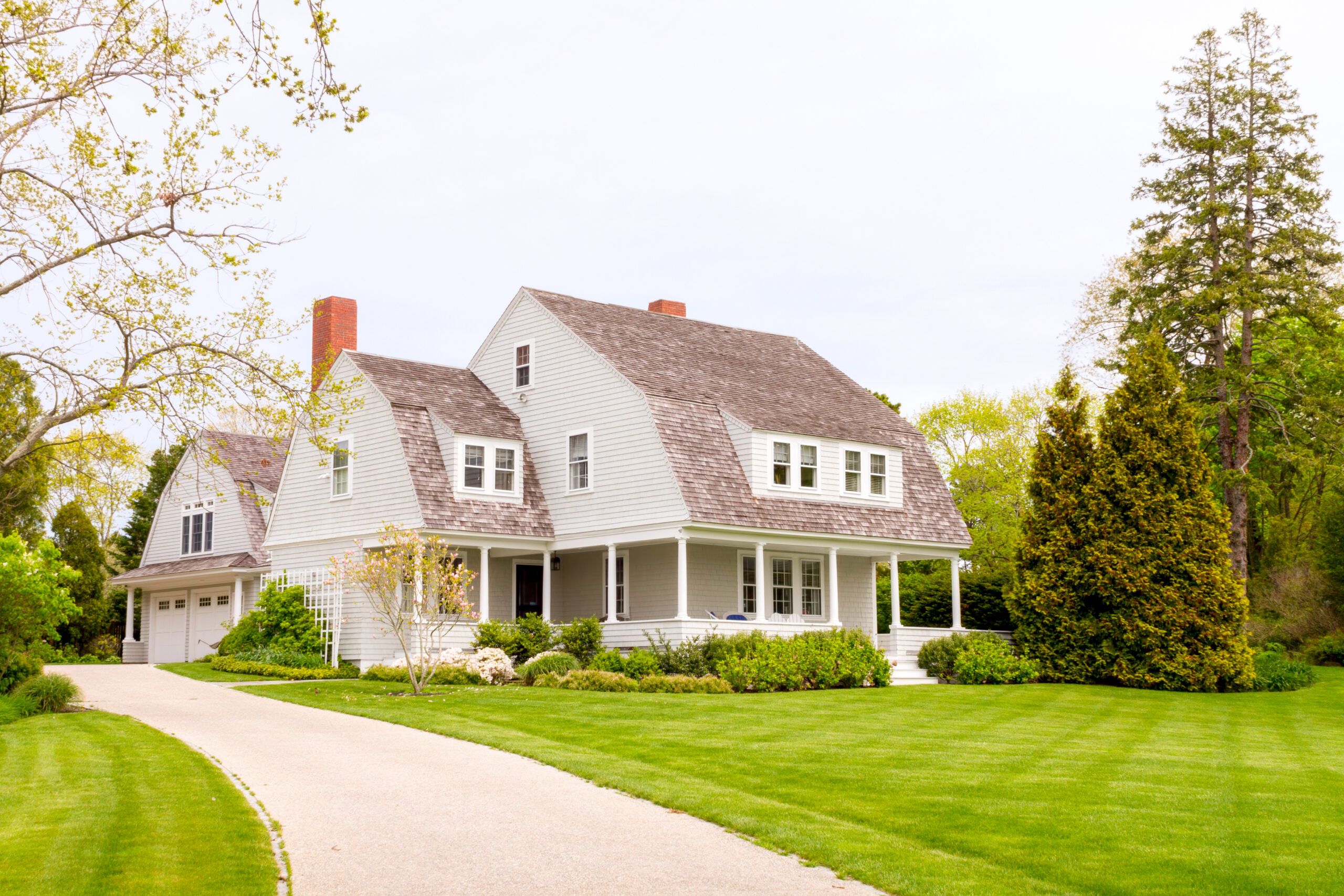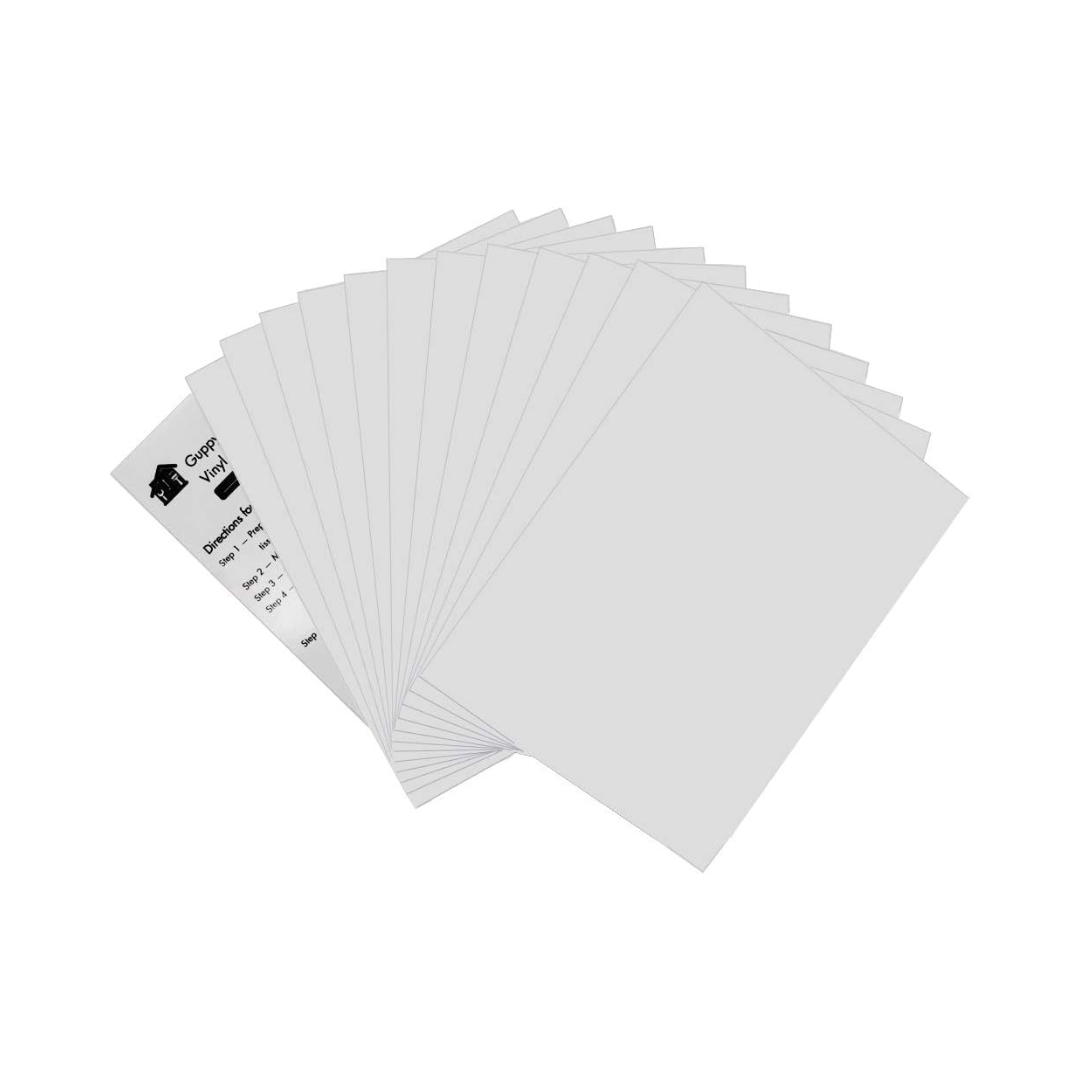Vinyl siding is one of the most popular choices for homes in the United States. It’s low maintenance, affordable, and can be made to resemble other materials like wood or stone for a fraction of the cost. In this guide, we’ll explore vinyl siding’s benefits, types, installation methods, and long-term value to help you decide if it’s the right choice for your home.
What Is Vinyl Siding?
Vinyl siding is a plastic exterior cladding for houses. Homeowners use it for decoration and weatherproofing. Vinyl siding is primarily made of polyvinyl chloride (PVC) but also includes various additives for enhanced durability and UV resistance.
It comes in various colors and styles, which can imitate the appearance of wood clapboard, cedar shakes, and even stone. This allows homeowners to customize vinyl to their desired look while benefiting from its practical advantages.
Advantages of Vinyl Siding
Vinyl siding offers many benefits that contribute to its popularity:
- Color variety: It’s available in a wide range of colors that won’t fade or chip.
- Cost-effectiveness: It’s generally less expensive than other materials, such as cedar or aluminum.
- Durability: Quality vinyl siding can last for decades with proper care.
- Energy efficiency: Insulated vinyl siding can improve your home’s thermal performance.
- Low maintenance: Unlike wood siding, vinyl doesn’t require regular painting or staining.
Types of Vinyl Siding
Vinyl siding comes in various styles to suit architectural designs and personal preferences. Each type offers unique design and functional benefits. Below, we break down the most popular options for vinyl siding, including each type’s pros and cons.
Clapboard Siding
Clapboard, also called horizontal or lap siding, is the most common type of vinyl siding. It mimics the look of a traditional wood clapboard with overlapping horizontal panels. Available in different widths, typically ranging from 3–8 inches, clapboard siding can create a classic or modern look depending on the panel size and texture chosen. This type of siding is versatile, making it a popular choice for many homeowners.
Insulated Vinyl Siding
Insulated vinyl siding features a layer of foam insulation bonded to the back of the panels. This additional layer improves the home’s energy efficiency and increases the siding’s rigidity and impact resistance. While more expensive than standard vinyl siding, insulated options can lead to long-term energy savings and improved comfort, making it appealing to homeowners looking for energy efficiency.
Vertical Vinyl Siding
Vertical siding, sometimes called board and batten, runs up and down rather than horizontally. This style can make a house appear taller, and homeowners use it for contemporary or farmhouse-style homes. It’s also popular for accent walls or to create visual interest when combined with horizontal siding. Vertical siding offers a fresh and distinctive look, making it ideal for homeowners seeking something unique.
Vinyl Shake Siding
Vinyl shake siding replicates the look of cedar shakes. It offers the charm of wood without the maintenance. It’s available in various textures and can be used for the entire house or as an accent on gables and upper stories. This type of siding adds character and dimension to a home’s exterior, and we recommend it if you want to enhance your home’s aesthetic appeal.
Vinyl Siding Cost Breakdown
Understanding vinyl siding costs can help you budget effectively for your exterior renovation projects. Prices vary based on quality, style, and regional factors.
Cost Per Square Foot
Vinyl siding costs an average of $3–$12 per square foot for materials alone.* Higher-end or specialized styles, like insulated vinyl siding, might cost around $8–$10 per square foot.
Cost Per Square
A “square” refers to 100 square feet of siding in the siding industry. Expect to pay $300–$1,200 per square for standard vinyl siding, including materials and basic installation. This metric is useful for more accurately estimating the overall cost of a sizable project.
Installation Costs
Labor for vinyl siding installation typically costs $3.70–$5 per square foot. The following factors can impact how much you’ll pay for labor:
- Home size and complexity
- Necessary repairs to the underlying structure
- Regional labor rates
- Removal of existing siding
The total cost for vinyl siding installation can range from $6,370–$18,250 for a typical 2,000-square-foot home. This price includes materials and labor.
*Cost information is based on 2024 reports from Angi and Hover.
Factors Affecting Vinyl Siding Quality
Not all vinyl siding is created equal. Understanding the factors that affect quality will help you choose a product that will perform well over time.
- Color retention: High-quality vinyl siding includes UV-resistant additives that help prevent fading and color changes because of sun exposure. Look for products with warranties that specifically cover color retention to ensure your siding maintains its appearance—and curb appeal—for years.
- Thickness and durability: The thickness of vinyl siding panels is a key indicator of quality and durability. Panels are at least .040 inches thick, with premium products ranging from .042 to .045 inches. Thicker panels are more resistant to impacts and less likely to warp or buckle with time. Homeowners should prioritize thickness when evaluating different vinyl siding options.
- Weather resistance: Superior vinyl siding products are engineered to withstand extreme weather conditions, including high winds, heavy rain, and temperature fluctuations. Features like reinforced nailing hems and interlocking panel designs contribute to better weather resistance and overall performance, making vinyl siding a practical choice in various climates.

How To Choose the Best Vinyl Siding
Selecting the right vinyl siding involves considering several factors to ensure you get the best value. We recommend the following steps.
Evaluate Brands
Research reputable brands that are known for quality vinyl siding products. We recommend looking for manufacturers that adhere to or exceed American Society for Testing and Materials (ASTM) standards for vinyl siding. Reading customer reviews and consulting with local contractors can provide insights into brand reliability and performance. We suggest focusing on more reputable brands, as they’re often a safer bet for long-term satisfaction.
Compare Warranties
Warranty coverage often indicates a product’s quality and the manufacturer’s confidence in its longevity. Look for warranties that offer the following:
- Long-term coverage (50-year or lifetime coverage is common for quality products)
- Protection against fading, chalking, and other weather-related issues
- Transferability to future homeowners
Read the fine print to understand what’s covered and any limitations or prorating of coverage over time. Comprehensive warranties offer peace of mind and protect your investment.
Consider Climate Factors
Your local climate should influence your choice of vinyl siding. Look for products designed to withstand thermal expansion and contraction in areas with extreme temperature fluctuations. For coastal regions, choose siding rated for high wind resistance and salt spray exposure. Tailoring your choice to climate conditions helps ensure durability and performance.
How To Install Vinyl Siding
Even the highest-quality product can fail if not installed correctly. Here’s how a typical vinyl installation should go.
Preparing the Surface
Before installation, you must prepare your home’s exterior by taking the following steps:
- Ensure the surface is clean, dry, and level.
- Install a weather barrier or house wrap.
- Remove or repair any damaged existing siding.
Proper preparation helps prevent moisture issues and ensures the new siding has a solid foundation. Skipping this step can lead to future problems.
Nailing Methods
Nails should be driven through the center of the nailing slots, leaving about 1/32 of an inch of space between the nail head and the siding. This allows the vinyl to expand and contract with temperature changes. Overdriving nails can cause the panels to buckle or warp.
Dealing With Expansion and Contraction
Temperature changes cause vinyl siding to expand and contract. Use the following techniques to help prevent buckling, warping, and other issues related to thermal expansion.
- Leave a 1/4 of an inch gap at all openings and stops
- Increase this gap to 3/8 of an inch when installing in temperatures below 32 degrees Fahrenheit
- Use J-channel and other trim pieces to allow for movement

Maintenance and Care for Vinyl Siding
While vinyl siding is low-maintenance, some care is required to keep it looking its best and functioning properly.
Cleaning Methods
Cleaning vinyl regularly helps maintain its appearance and prevents dirt and mildew buildup. Use these methods:
- Don’t use harsh or abrasive cleaners that could damage the siding.
- Rinse with water to remove loose debris.
- Use a soft-bristled brush and a mixture of mild soap and water for stubborn dirt.
- Use specialized vinyl siding cleaner for tougher stains.
Repair Techniques
Knowing how to handle minor repairs can save money and extend the life of your siding. You can repair minor damage to vinyl siding without replacing entire panels if you do the following:
- Cut out and replace smaller sections of large panels.
- Fill small holes or cracks with exterior spackling compounds.
- Resecure and nail loose panels properly.
When To Replace
With proper care and maintenance, most quality vinyl siding should last 20–40 years, but all siding eventually needs replacement. Look out for the following signs to decide if you need replacement:
- Extensive cracking, warping, or sagging
- Fading that can’t be remedied by cleaning
- Frequent repairs or persistent issues with moisture intrusion
In this video, Tom Silva explains how to replace damaged vinyl siding.
Impact on Home Value
Depending on various factors, installing vinyl siding can significantly impact your home’s value.
Pros of Vinyl Siding for Resale
Vinyl siding has several benefits that can make your home more attractive to potential buyers and may justify a higher price:
- Improves curb appeal with a fresh, modern look
- Potentially lowers energy costs with insulated options
- Reduces maintenance requirements for future owners
Potential Drawbacks in Historic Neighborhoods
That being said, vinyl siding may not be appropriate in historic or architecturally significant neighborhoods and could potentially decrease home value. “If there are 10 restored Victorians on the street and one has vinyl siding, the value of the one-sided vinyl will suffer,” says John Leeke, a home restoration consultant.
Maintaining original materials or using period-appropriate alternatives may be more valuable in such areas, so consider your neighborhood before installing vinyl.
Common Concerns and Misconceptions
Despite its popularity, vinyl siding has some concerns and misconceptions to be aware of.
Addressing Aesthetic Issues
Some homeowners worry that vinyl siding looks “cheap” or “plastic.” However, choosing a quality product and ensuring proper installation can result in an attractive, natural-looking exterior. High-quality options can convincingly mimic traditional materials. Modern vinyl products offer realistic wood grain textures, a wide range of colors and styles, and improved trim options for a more finished look.
Tackling Environmental Concerns
Environmental concerns about vinyl siding typically revolve around its production and disposal. Manufacturers are working on more sustainable production methods and recycling initiatives to address these concerns. If environmental impact is important to you, we recommend looking for brands that prioritize sustainability.
PVC production does have environmental impacts, but vinyl siding can also benefit the environment positively for the following reasons:
- It can be recycled at the end of its life, though recycling programs aren’t yet widespread
- It reduces frequent replacement due to its long lifespan
- It requires less energy to produce than some alternatives
How To Save Money on Vinyl Siding
Vinyl siding is already affordable, but there are a few ways you can cut costs further:
- Choose a midrange product that balances quality and affordability.
- Compare quotes from multiple contractors.
- Consider installing during the offseason when demand is lower.
- Opt for standard colors and styles, as custom options can increase costs.
- Prepare the existing surface yourself to reduce labor costs.
Remember that cutting costs shouldn’t come at the expense of quality, as poor materials or installation can lead to higher long-term expenses. Being strategic about your choices can result in smart savings without compromising results.
Vinyl Siding vs. Other Materials
It’s helpful to compare vinyl siding with other popular siding choices so you can make an informed decision. Here’s a quick overview:
- Aluminum siding: Aluminum siding was once a popular alternative to wood, but it’s less common now. Vinyl siding is about 26% less expensive than aluminum and doesn’t dent as easily. However, aluminum may be preferable in extremely cold climates where vinyl can become brittle.
- Fiber cement siding: Fiber cement siding is fire resistant and looks similar to wood. However, it’s typically more expensive than vinyl and heavier, which can increase installation costs. Vinyl siding is lighter, easier to install, and generally more affordable.
- Wood siding: Wood siding offers natural beauty and can be painted any color but requires more maintenance than vinyl. It’s also more susceptible to rot, insect damage, and fire. Vinyl siding costs about 11% less than cedar siding and doesn’t require regular painting or staining.
Our Conclusion
Vinyl siding is affordable, low-maintenance, and versatile, making it the most popular siding choice in America. With advancements in manufacturing, today’s vinyl siding products can provide attractive, durable exteriors suitable for various architectural styles.
It may not be ideal for every home, particularly in historic districts, but vinyl siding can significantly enhance curb appeal and energy efficiency for many properties. As with any major home improvement project, doing thorough research and consulting experienced professionals are key to achieving the best results.


